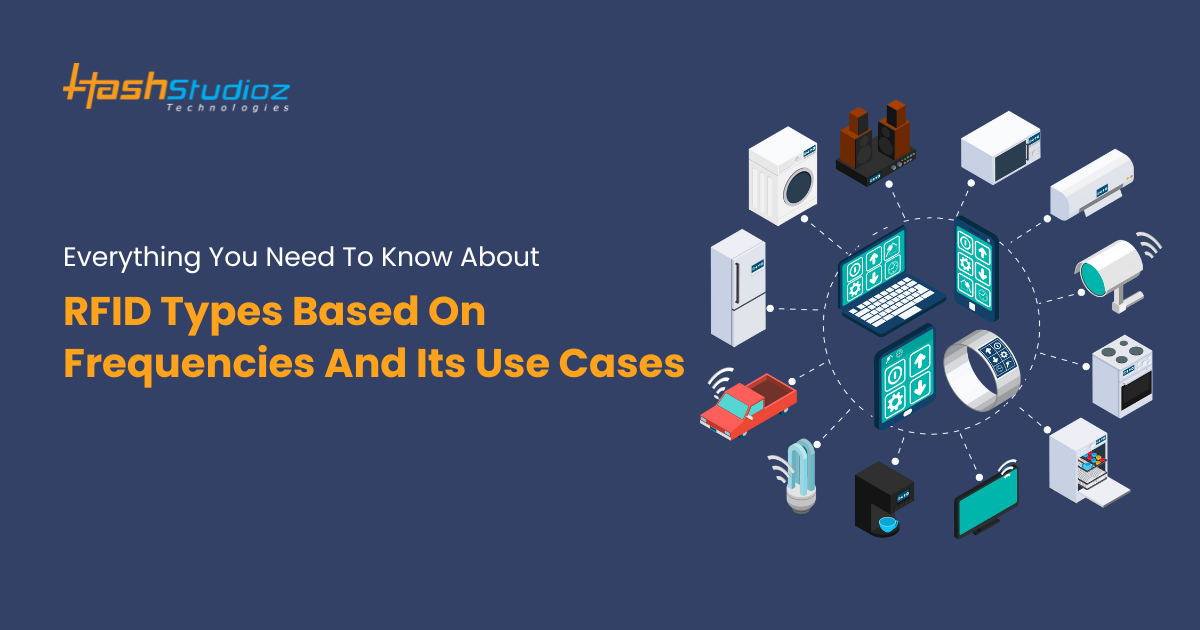Earlier manual methods such as barcodes and serial numbers were widely used, with limitations. Barcodes required line-of-sight scanning and manual input, making them time-consuming and prone to human errors.
Tracking large volumes of items or assets became complicated and inefficient. Barcodes were also susceptible to damage, making them unreliable for long-term use. Additionally, barcodes could not store dynamic information or provide real-time updates.
Nowadays, from controlling manufacturing processes to maintenance and inspection of equipment, managing assets, and tracking goods — a highly versatile technology, RFID with its applications has revolutionized the digital landscape.
In this article, we will explore what RFID is, how it works, and some of its common use cases.
Table of Contents
What is RFID (Radio Frequency Identification)?
Radio-frequency identification (RFID) is a technology that uses radio waves to interact with and track tags attached to objects. It is used in libraries, museums, hospitals, waste management, and amusement park operations for tracking items, managing supplies, and controlling access.
RFID tags can replace barcodes on items by attaching small computer chips. An RFID reader uses built-in sensors to communicate with tags and to identify them.
How RFID Works?
An RFID system consists of three components: the scanning antenna, the transceiver, and the transponder. An RFID reader is a device that combines a scanning antenna with a transceiver.
There are two types of RFID readers: fixed readers and mobile readers. RFID readers can either be portable or permanently attached to a network. The tag is activated by radio waves. Tags transmit waves back to the antenna, where they are translated into data.
The transponder is on the RFID tag itself. There are many factors that affect RFID tag read ranges, including the type of tag, the type of reader, the RFID types on frequency, and interference from the environment. The read range of tags with a stronger power source is also longer.
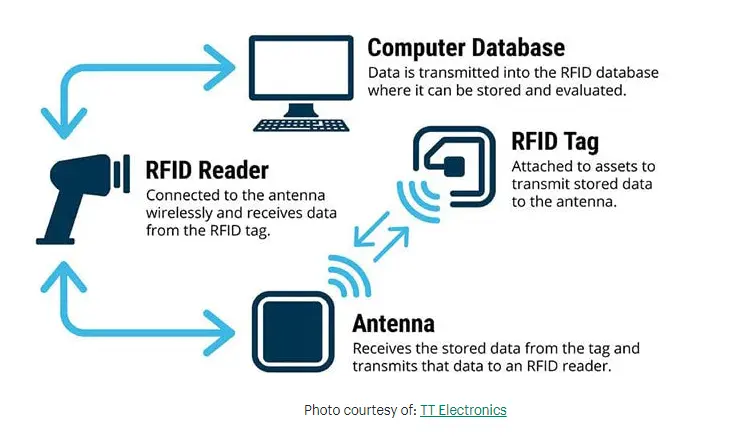
What are the Types of RFID Systems?
RFID systems can be divided into three types: low frequency (LF), high frequency (HF), and ultra-high frequency (UHF). Microwave RFID is also available. Depending on the country and region, frequencies vary greatly.
Low-frequency RFID systems
The frequency ranges from 30 KHz to 500 KHz, with 125 KHz being the most common. Low-frequency RFID typically has a short transmission range of a few inches to less than six feet. It is commonly used for proximity access control, animal tracking, and some automotive applications. LF RFID has a shorter read range compared to other frequencies but performs well in environments with high metal or liquid content.
High-frequency RFID systems
The frequency ranges from 3 MHz to 30 MHz, with 13.56 MHz being the typical HF frequency. The standard range is a few inches to several feet. It is widely used in applications such as contactless payment systems, ticketing, and library book tracking.
HF RFID provides a better read range than LF, and its short wavelength makes it less susceptible to interference from metals and liquids.
Ultra-High Frequency RFID systems
The frequency range of RFID systems spans from 300 MHz to 960 MHz, with 433 MHz being a typical value. RFID readers usually read these signals from distances of 25 feet or more. This frequency range dominates applications such as supply chain management, retail inventory, and asset tracking.
UHF RFID offers a longer read range, faster data transfer rates, and the ability to read multiple tags simultaneously.
Microwave RFID systems
They run at 2.45 GHz and can be read from more than 30 feet away.
The frequency will vary depending on the RFID application, with actual distances sometimes differing from those expected.
Using tags with additional power can increase read ranges to more than 300 feet if longer ranges are required.
track people, products, vehicles, and currency (such as credit cards)
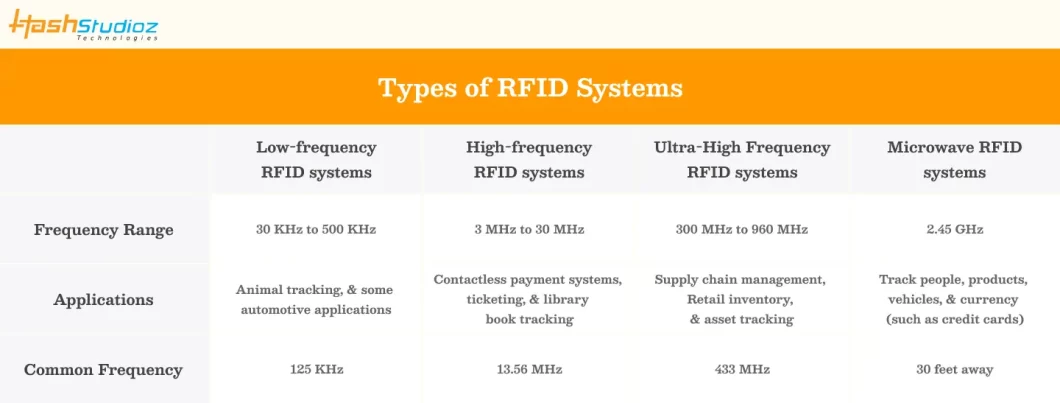
What are RFID Tags?
RFID tags contain small computer chips with antennas, and users can affix them to items for tracking. RFID readers read tags that store unique identification numbers. Manufacturers or users can embed an RFID tag in a product, an animal, or a person.
They can often replace barcodes where a barcode scanner cannot read them. RFID tags consist of an integrated circuit, a microchip, and an antenna. Data can be stored on the chip and transmitted to a computer. An RFID reader sends radio signals to the antenna.
In general, RFID tags fall into two categories: Active RFID tags and Passive RFID tags.
Active RFID
Active RFID tags operate continuously via battery power. Their larger size makes them suitable for larger assets and also gives them a longer reading range. Outdoor industries like oil, gas, construction, and mining typically use active tags in rugged environments.
Passive RFID
An RFID scanner powers a passive RFID tag using radio waves, rather than the tag relying on an internal power source. The tags are smaller and cheaper than active RFID tags. Healthcare, manufacturing, and retail environments are more likely to use them on smaller assets.
Practical RFID Use Cases
An ever-increasing number of applications now use RFID in simpler, more scalable, and cost-effective ways.
Although location-tracking tags that integrate with inventory software have been around for decades, new applications will emerge as the technology becomes more affordable and accessible. The increasing demand for digitization and tracking of physical objects has been intensified by explosive growth in e-commerce and the Internet of Things (IoT).
Waste Management and Recycling
Organizations have implemented RFID in waste management and recycling processes to enhance efficiency and sustainability. Workers or automated systems can attach RFID tags to waste containers, enabling them to identify, track, and sort different types of waste automatically.
This streamlines waste collection and recycling operations, optimizing routes, reducing costs, and improving recycling rates. RFID technology helps achieve environmental goals and promotes a more sustainable approach to waste management.
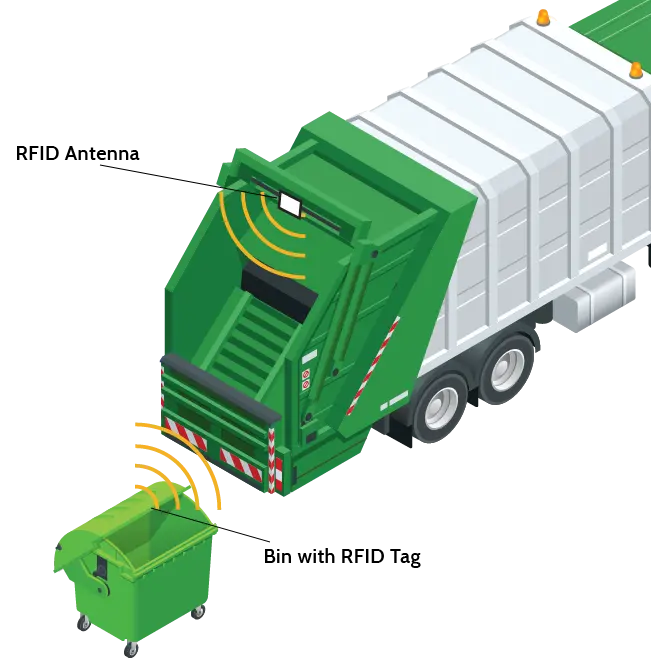
Amusement Park Operations and Guest Experience
RFID technology has revolutionized amusement park operations and guest experiences. RFID-enabled tickets and wristbands streamline entry processes, while cashless payments via RFID wristbands eliminate the need for physical cash. Virtual queueing and personalized ride reservations minimize waiting times.
RFID integration with photo capture simplifies souvenir purchases, and RFID wristbands linked to guardian information prevent child loss. RFID enhances convenience, safety, and overall guest satisfaction in amusement parks.
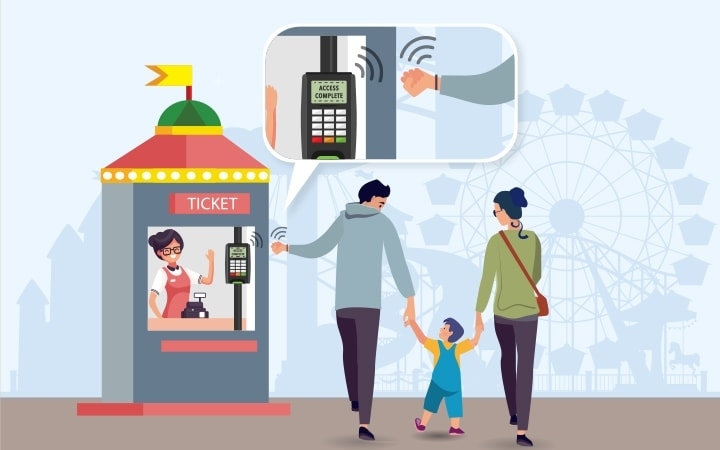
FASTag
RFID technology is at the core of FASTag implementation. FASTag is equipped with an RFID chip that stores vehicle and account information. When a vehicle with a FASTag approaches a toll booth, an RFID reader installed overhead reads the tag’s unique identification data. The reader communicates with the back-end system, deducts the appropriate toll amount from the linked prepaid account, and opens the toll gate.
This contactless process eliminates the need for physical transactions, reduces waiting times, and enhances operational efficiency. The RFID implementation in FASTag ensures seamless communication between the tag and the reader, enabling quick and accurate toll collection, and making it a vital component of the system’s success.
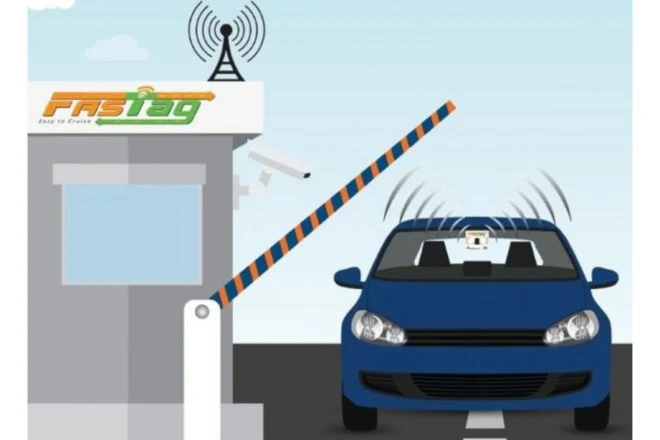
Park+
RFID technology plays a crucial role in Park+ implementation. Park+ utilizes RFID in the form of electronic parking passes or tags affixed to vehicles. RFID tags contain unique vehicle identification information.
When a vehicle equipped with the Park+ RFID tag enters a parking facility, RFID readers installed at the entry and exit points detect the tag and automatically record entry and exit times.
This contactless process eliminates physical tickets or manual entry/exit procedures. RFID enables seamless communication between the tag and the reader. This facilitates efficient and accurate parking management, occupancy monitoring, automated billing, and overall operational optimization for Park+.

Airlines
RFID technology offers several benefits to airlines. It enables efficient baggage tracking, reducing the risk of lost or mishandled luggage. RFID tags attached to baggage allow for real-time monitoring throughout the journey, enhancing baggage handling processes.
Additionally, RFID is utilized for passenger identification, access control, and boarding procedures, streamlining operations and improving the overall travel experience.
Hospitals
RFID technology offers several benefits to hospitals. RFID tags enable accurate patient identification, medication administration, and access control. RFID-based asset tracking helps locate and manage medical equipment efficiently, reducing search time. Automated inventory management with RFID ensures sufficient stock levels and reduces manual errors.
Vehicle Tracking
RFID technology aids in vehicle tracking by providing real-time location data and facilitating efficient management. RFID tags are attached to vehicles, enabling continuous monitoring through RFID readers placed at checkpoints or fixed locations.
This enables organizations to track vehicle movement, optimize routes, and enhance security measures. RFID-based vehicle tracking systems enhance fleet management and improve logistics operations.
Future Scope
RFID systems are increasingly used in Internet of Things (IoT) deployments. The versatility of RFID, coupled with advancements is paving the way for its widespread adoption in everyday applications. From smart shelves that automatically restock products to contactless payment systems and personalized healthcare solutions, the future of RFID holds endless possibilities. Furthermore, tactical and strategic decisions will be faster with RFID solutions.
Make Informed RFID Decisions with HashStudioz: Your Partner in Intelligent Tracking Solutions
Understanding the differences between RFID frequencies Low, High, and Ultra-High is key to building efficient, reliable, and scalable systems. From asset tracking and inventory management to access control and logistics, choosing the right RFID type directly impacts range, speed, and performance.
At HashStudioz, we help businesses navigate RFID technology with precision. Our team specializes in designing and deploying RFID solutions that align with your industry needs, operational scale, and data requirements ensuring accuracy, automation, and long-term value.
Connect with HashStudioz today to explore how customized RFID systems can power smarter operations across your organization.

Conclusion
RFID technology has revolutionized various industries by providing efficient and accurate solutions for identification, tracking, and data management. From low-frequency to ultra-high-frequency systems, each RFID type offers unique advantages for specific applications.
Whether it’s inventory management, supply chain optimization, or contactless payment systems, RFID technology continues to shape the way we interact with the world and technology. Embracing RFID potential opens doors to endless possibilities, empowering businesses and individuals alike to streamline operations, enhance security, and drive innovation into the future.

